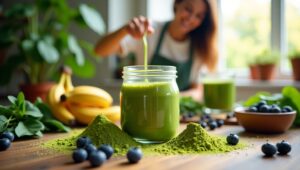If you’re one of the millions of people around the world who can’t handle lactose, you know how hard it can be to eat dairy products without getting stomach pain. But it can be hard to give up dairy completely, especially since it is a good source of calcium, vitamin D, and other important nutrients. There are a lot of dairy foods that are low in lactose that you can eat without having stomach problems.
In this blog post, we’ll look at some of the best low-lactose dairy foods you can add to your diet. Whether you can’t handle lactose or just want to eat less of it, these dairy items will give you all the benefits of dairy without making you feel bad.
Table of Contents
ToggleThe term “lactose intolerance” doesn’t seem to fit.
According to reputable sources, around 65% of the global population suffers from lactose intolerance, a common digestive ailment. It’s interesting that North America, Europe, and Australia have lower prevalence rates than Asia and South America.
The inability to digest lactose, the main sugar in milk, results from a lack of the digestive enzyme lactase. Pain, gas, bloating, diarrhea, and nausea are just some of the unpleasant side effects of lactose intolerance. People who have lactose intolerance usually avoid dairy products and other meals containing lactose since doing so helps them manage their symptoms. (1)
Many dairy products, however, have a relatively low lactose level and may be tolerated by persons who are lactose intolerant. According to research, most people who are lactose intolerant can safely take up to 12 grams of lactose each day.
Still, it’s crucial to keep an eye on one’s symptoms and lactose intake because lactose intolerance symptoms and tolerances differ from person to person. It’s important to remember that even low-lactose choices like milk, butter, and cream in a coffee can put you over the daily limit of 12 grams recommended for lactose consumption.
Related Article: Healthy Eating: The Key to a Vibrant Life
List of Dairy Foods Low in Lactose
1. Hard Cheeses
Very little lactose is found in hard cheeses like cheddar, parmesan, and Swiss. When the whey is washed off during the process of making cheese, most of the lactose is taken out. The less lactose a cheese has, the longer it has been kept. For people who can’t handle lactose, this makes hard cheese a great choice.
2. Yogurt
Lactose is broken down into lactic acid when milk is fermented with live cultures. This process lowers the amount of lactose in the yoghurt, which makes it easier to eat for people who can’t handle lactose. Look for plain yoghurt or Greek yoghurt because flavoured yoghurts may have extra sugars that can make digestive problems worse.
3. Butter
Butter is made by separating the butterfat from the buttermilk by making cream. Lactose is in the liquid part of milk, so there isn’t much of it left in butter. But if you have a serious intolerance to lactose, you should still use butter sparingly.
4. Kefir
Kefir is a drink made from sour milk that tastes like yogurt. Like yogurt, kefir has live bacteria that break down the lactose during the fermentation process. This makes it easier for people who can’t digest lactose to digest kefir. Kefir can be eaten by itself, or you can add it to drinks to make them creamier.
5. Lactose-Free Milk
People who can’t handle lactose but still want to drink milk can choose lactose-free milk. Lactase, an enzyme that breaks down lactose, is added to normal milk to make it. This turns lactose into simpler sugars, which makes milk easier to swallow.
6. Cottage cheese
Cottage cheese is a fresh cheese that is made by adding an acid to milk, like vinegar or lemon juice, to make it curdle. This process lowers the amount of lactose in the cheese, which makes it easier to digest than new cheeses like ricotta.
7. Hard Ice Cream
Like hard cheeses, hard ice cream doesn’t have much lactose in it. Most of the lactose crystallizes when the milk is frozen, which lowers the amount of lactose. But milk products may be added to soft-serve ice cream and some kinds of frozen yogurt, which can make them higher in lactose.
conclusion
If you choose dairy foods that are low in lactose, you can still enjoy the taste and health benefits of dairy without having trouble digesting it. If you don’t know how much lactose you can handle, start with small amounts and raise them slowly. And if you still have digestive problems, talk to your doctor or a registered dietitian for personalized help. By adding these low-lactose dairy items to your diet, you can keep a healthy, well-balanced diet and avoid digestive problems.










1 thought on “Dairy Foods Low in Lactose: 7 Delicious Options””
Pingback: "Nutritional Benefits and Tips for Choosing the Best Yogurt"